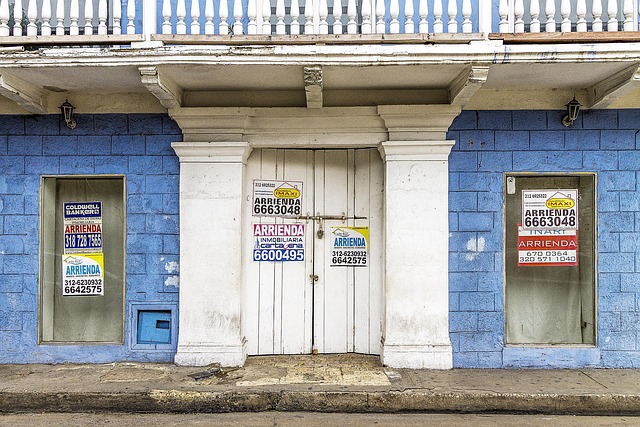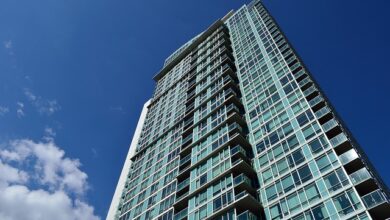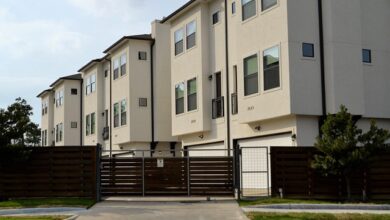How to Protect Your Home from Natural Disasters with Insurance in the UK

The UK may not be as prone to dramatic natural disasters as some other parts of the world, but it is far from immune. From flooding and storms to subsidence and even wildfires, natural events can cause significant damage to homes and properties. While you can’t control the weather, you can take steps to protect your home—and your finances—by ensuring you have the right insurance coverage in place. In this guide, we’ll explore how to safeguard your home from natural disasters through insurance, what policies typically cover, and practical tips to minimize risks.
Understanding Natural Disasters in the UK
Before diving into insurance, it’s important to understand the types of natural disasters that are most common in the UK:
- Flooding : The UK experiences frequent flooding, particularly in low-lying areas and regions near rivers or coasts. Heavy rainfall and rising sea levels exacerbate the risk.
- Storms : Severe storms, including high winds and lightning strikes, can cause structural damage, uproot trees, and disrupt power supplies.
- Subsidence : This occurs when the ground beneath your home shifts or sinks, often due to prolonged dry spells or soil instability.
- Wildfires : While less common, wildfires have become a growing concern, especially during heatwaves and droughts.
- Freezing Temperatures : Harsh winters can lead to burst pipes and water damage, which can be costly to repair.
How Home Insurance Can Help
Home insurance is one of the most effective ways to protect your property from the financial impact of natural disasters. There are two main types of home insurance in the UK:
1. Buildings Insurance
- What It Covers : Buildings insurance protects the physical structure of your home, including walls, roofs, floors, and permanent fixtures like plumbing and wiring.
- Relevance to Natural Disasters : This type of insurance is crucial for covering damage caused by events like storms, subsidence, and flooding.
2. Contents Insurance
- What It Covers : Contents insurance protects your belongings, such as furniture, electronics, and personal items, against theft, fire, and certain natural disasters.
- Relevance to Natural Disasters : If a storm or flood damages or destroys your possessions, contents insurance can help replace them.
Some insurers offer combined policies that include both buildings and contents coverage, making it easier to manage your protection.
What Does Home Insurance Typically Cover?
While coverage varies by provider and policy, here’s a general overview of what home insurance might cover in relation to natural disasters:
1. Flooding
- Standard home insurance policies often exclude flood damage unless explicitly included. However, many insurers offer flood cover as part of their buildings and contents policies, especially in high-risk areas.
- Tip : Check if your property is in a flood-risk area using the Environment Agency’s flood maps.
2. Storms and Wind Damage
- Most policies cover damage caused by storms, including broken windows, roof damage, and fallen trees. However, garden structures like sheds may require additional coverage.
3. Subsidence
- Subsidence is typically covered under buildings insurance, but there may be exclusions for damage caused by nearby construction or tree roots.
- Tip : Look for policies that include heave (ground swelling) and landslip, as these are related issues.
4. Fire (Including Wildfires)
- Fire damage is usually covered under both buildings and contents insurance. This includes fires caused by natural events like lightning strikes or wildfires.
5. Burst Pipes and Water Damage
- Burst pipes caused by freezing temperatures are generally covered, but preventative maintenance (e.g., insulating pipes) may be required to validate claims.
6. Alternative Accommodation
- Many policies provide temporary accommodation costs if your home becomes uninhabitable due to a covered event, such as a flood or fire.
What Isn’t Covered?
It’s equally important to know what home insurance typically doesn’t cover:
- Wear and Tear : Damage caused by neglect or lack of maintenance is usually excluded.
- Pre-existing Issues : For example, if your home already has cracks from subsidence, new damage may not be covered.
- Floods in High-Risk Areas : Some insurers may refuse coverage or charge higher premiums for properties in flood-prone zones.
- Acts of War or Terrorism : These are generally excluded unless you purchase specialized coverage.
How to Choose the Right Insurance Policy
Selecting the right home insurance policy requires careful consideration. Here are some tips to help you make an informed decision:
1. Assess Your Risks
- Evaluate the natural disaster risks in your area. For example, if you live near a river or coast, prioritize flood coverage. If you’re in a region prone to subsidence, ensure your policy includes this.
2. Check Flood Re Insurance
- If you’re in a high-risk flood area, consider insurers participating in the Flood Re scheme. This initiative helps make flood insurance more affordable for homeowners in vulnerable locations.
3. Compare Quotes
- Use comparison websites like MoneySuperMarket or Compare the Market to compare premiums, coverage, and exclusions from multiple providers.
4. Read the Fine Print
- Pay close attention to policy terms, conditions, and exclusions. For example, some policies may only cover certain types of storm damage or impose limits on flood payouts.
5. Consider Excess Levels
- The excess is the amount you pay toward a claim before the insurer covers the rest. A higher excess can lower your premium, but ensure it’s an amount you can afford in an emergency.
6. Bundle Policies
- Combining buildings and contents insurance with the same provider can often result in discounts.
Practical Steps to Minimize Risks
While insurance is essential, taking proactive measures to protect your home can reduce the likelihood of damage and potentially lower your premiums:
1. Flood Prevention
- Install flood barriers or non-return valves on drains.
- Move electrical sockets and appliances above ground level.
- Keep gutters and drains clear to prevent water buildup.
2. Storm Preparedness
- Secure loose objects in your garden that could become projectiles in high winds.
- Trim trees and branches near your home to prevent them from falling during storms.
- Reinforce windows and doors with storm shutters or film.
3. Subsidence Mitigation
- Plant trees and shrubs away from your home’s foundation.
- Monitor cracks in walls and seek professional advice if you notice significant changes.
4. Winterproofing
- Insulate pipes to prevent them from freezing and bursting.
- Keep your heating on a low setting during cold spells to maintain warmth.
5. Install Alarms
- Smoke detectors, carbon monoxide alarms, and flood sensors can alert you to potential dangers early, minimizing damage.
Making a Claim
If your home is damaged by a natural disaster, follow these steps to make a claim:
- Document the Damage : Take photos and videos of the affected areas and items.
- Contact Your Insurer : Notify them as soon as possible and provide all necessary details.
- Secure Your Property : Take reasonable steps to prevent further damage (e.g., covering broken windows with tarpaulin).
- Keep Records : Save receipts for any emergency repairs or temporary accommodation costs.




